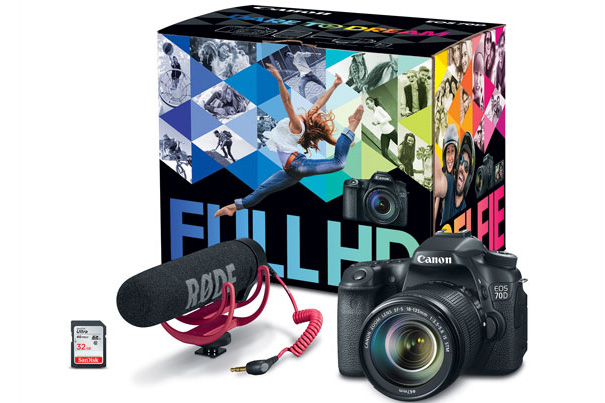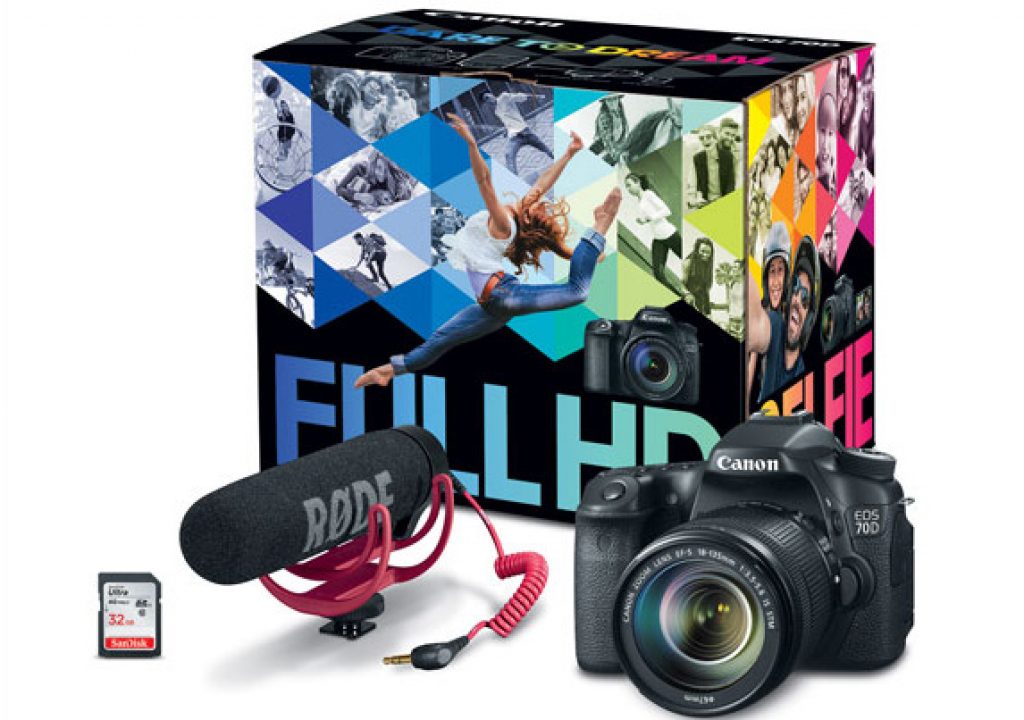
Since it was launched, in 2013, the EOS 70D, has taken the position as the best DSLR for video, if you don’t want to break the bank. So, if you’re still looking for a Christmas gift for a videomaker in love with DSLRs, the EOS 70D is the logical choice.
Back in 2014 I wrote here at Pro Video Coalition that the EOS Rebel 3Ti (EOS 600D in some markets) was the best and cheapest DSLR for video, and while the camera continues to be a working tool for those owning it, the fact is that four years have passed and it is time to find a new king for the crown. The logic choice, as far as I can see, is the EOS 70D, launched in 2013, a real improvement in an area that is important to videographers: autofocus.
While many will always defend that a real videographer focus by hand, things in real life are quite different, and the fact that Canon developed a new system for – some – of their DSLRs says it all. In fact, the Canon EOS 70D was the launch platform for Canon’s Dual Pixel CMOS Autofocus, which provides great improvement in focusing speed while in Live View, both for stills and video. At large apertures such as f/1.8, the 70D’s Dual Pixel CMOS Autofocus provides a significant improvement in focus accuracy and consistency over conventional autofocus methods.
According to Canon’s technical information, “Dual Pixel CMOS AF is a sensor-based, phase detection Auto Focus (AF) technology designed to provide smooth, high-performance focus tracking in movies and fast autofocus acquisition when shooting still photos in Live View mode.”
The technology, which is unique to Canon, is ideal for creating professional-looking pull-focus effects and keeping a subject moving towards the user in sharp focus while maintaining a blurred background – a defining characteristic of EOS Movies. Thanks to this groundbreaking advance, capturing a subject and retaining sharp focus, even when moving, has never been easier, adds Canon.
The importance of the technology is such, in fact, that it also applies to EOS Cinema cameras like the C100 or C300, which in some cases were updated to use the system. Meaning that the humble EOS 70D is up there with the big league, when it comes to AF.
Canon indicates that “Dual Pixel CMOS AF was developed so that control of focus during movie making is made easier and smoother – removing the perceived notions that a DSLR’s movie mode is usable only to a professional. Additionally, Dual Pixel CMOS AF was developed to enhance the usability of shooting with Live View – moving even closer towards the same performance encountered when using the viewfinder.”
While the other system in use by Canon on their DSLRs, Hybrid CMOS AF, has reached a third version recently, Hybrid CMOS AF III, it still is no match for DPAF – Dual Pixel Auto Focus, as some call it. So, if video is most important to you, and you’re in the market for a DSLR, the Canon EOS 70D continues to be the logic choice. Price is an area where the EOS 70D is beaten by the recent models EOS Rebel T6i and T6s, which offer a sensor with more pixels and some other features. But you’ll not regret paying the difference if you want to have full control of autofocus.
Because one DSLR for video is more than a camera and lens, the obvious choice if you want to be prepared to start right out, is to buy a Video Creator Kit. The most accessible of Canon’s kit for the EOS 70D costs $1,249.00 at Canon’s own store, a discount of $400.00 over the original price of $1,649.00.
The kit includes everything you need to make your dreams into reality: a EF-S 18-135mm f/3.5-5.6 IS STM lens, a RODE VideoMic GO and Sandisk 32GB SDHC card. The VideoMic GO is a lightweight, easy to use, directional microphone that picks up clear audio in front of it, reducing surrounding sound and isolating your subject from background noise. The built-in shock mount reduces noise from handling and a foam windshield reduces wind noise. Mount the VideoMic GO on the camera’s hotshoe, plug in the 1/8″ (3.5mm) plug, insert the SDHC card and you’re ready to start shooting!
If you want to spend some more money, there is also a Video Creator Kit with an extra lens, the EF 70-300mm f/4-5.6 IS USM, which will extend the options when it comes to video and photography. This kit costs $1,648.99, with a discount of $650.00 over the original price of $2,298.99. And if you’re really willing to trade AF speed for price, you can go for a kit like the one based on the EOS Rebel T6i including the camera, with EF-S 18-55mm IS STM Lens, EF-S 55-250mm IS STM Lens, microphone and the 32GB SDHC Card, for $949.98 now, at Canon’s shop, instead of $1,299.98.
Canon has been using both systems, Dual Pixel CMOS AF and Hybrid CMOS AF III on recent cameras, with the DPAF technology being present on the higher end models, the EOS 7D Mark II and the EOS 70D, while the EOS Rebel line (or the EOS XXX in some markets), more accessible when it comes to price, uses the Hybrid Mode.
The evolution of this system in recent models suggests it is getting better, but it will be interesting to see if on the expected EOS 80D Canon will continue to use the Dual Pixel CMOS AF or if the technology will be reserved for the EOS Cinema line. Probably not, as we’ve seen many videographers relying on the EOS 70D as their main workhorse or using it in a mix with “bigger” cameras. Canon may even surprise us and reveal a EOS 80D with a Dual Pixel CMOS AF II system performing even better.
We may have news of the EOS 80D early 2016. But if you cannot wait, the EOS 70D is, right now, the logic choice when it comes to video. It’s the most affordable solution in the DSLR world.

